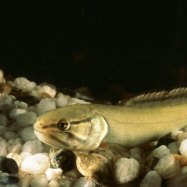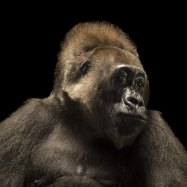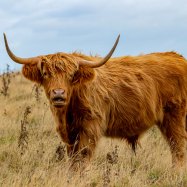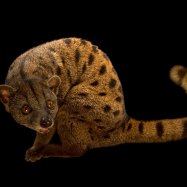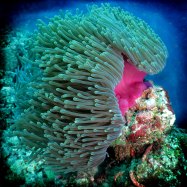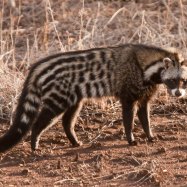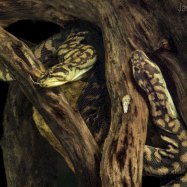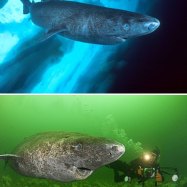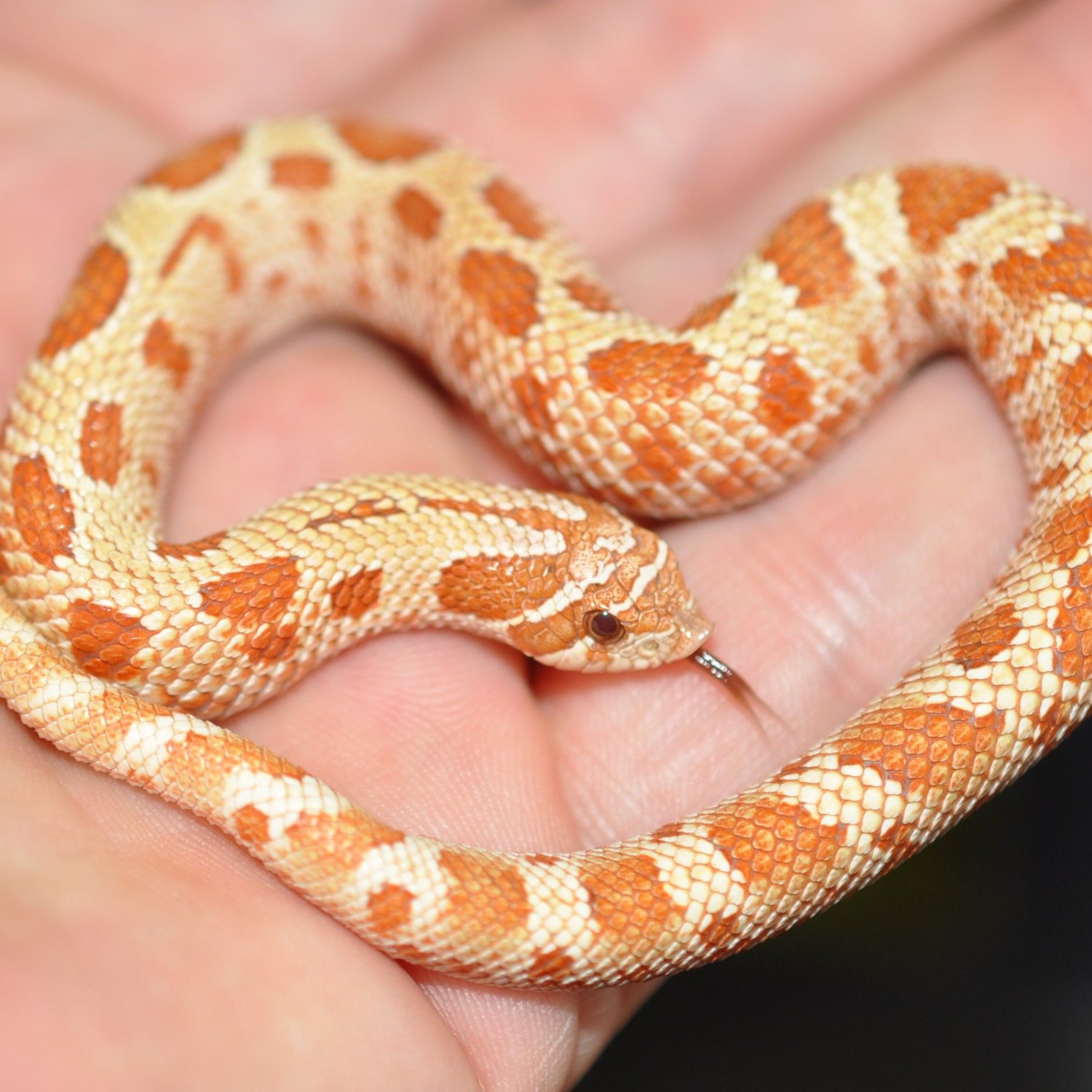
Hognose Snake
Up to 3 feet
The Hognose Snake, found in Central and Eastern United States, is known for its stocky body and slightly upturned snout. With a maximum length of 3 feet, these non-venomous snakes are harmless to humans. They belong to the Colubridae family and are also known as puff adders due to their habit of puffing up when threatened. Fascinating creatures, aren't they? #hognosesnake #natureswonders #colubridae
Animal Details Summary:
Common Name: Hognose Snake
Kingdom: Animalia
Habitat: Grasslands, woodlands, sandy areas
The Enigmatic Hognose Snake: An Elusive Creature of North America
The world is full of fascinating creatures, many of which are still waiting to be discovered. In the vast wilderness of North America, one such species has captured the curiosity of animal enthusiasts and herpetologists alike - the Hognose Snake (Heterodon nasicus).This unique and enigmatic reptile has captured the attention of many due to its distinctive physical features, fascinating behavior, and elusive nature. In this article, we will delve into the world of the Hognose Snake, exploring its scientific classification, natural habitat, feeding habits, and more Hognose Snake.
A Closer Look at the Hognose Snake
Before we dive into the details of this fascinating creature, let us first understand its scientific classification. The Hognose Snake belongs to the Animalia kingdom, Chordata phylum, and Reptilia class. It belongs to the Squamata order and the Colubridae family, which is the largest family of non-venomous snakes in the world.This species is scientifically known as Heterodon nasicus, derived from the Greek words "heteros" meaning "different" and "odous" meaning "tooth." This name references the unique rearward-pointing teeth of this species, which play a crucial role in its feeding habits.
The Hognose Snake is also commonly known as the Western/Prairie Hognose Snake, Eastern Hognose Snake, or simply the Hognose Snake. Its striking features and elusive nature have earned it a reputation as one of the most captivating animals in North America.
A Habitat Fit for the Hognose
These fascinating creatures are found in a variety of habitats in North America, including grasslands, woodlands, and sandy areas. They thrive in areas where they can easily hide and burrow, such as in loose soil, under rocks, or in the leaf litter of forests Horned Adder. This makes the central and eastern regions of the United States, where such landscapes are plentiful, a perfect location for the Hognose Snake to call home.They have also been found in neighboring countries like Mexico and Canada, giving them a wide geographical distribution. Despite their nomadic nature, Hognose Snakes tend to stay in one area for most of their lives, only leaving to find a mate or hibernate during the winter.
Their natural habitat provides a variety of food options, including small rodents, frogs, lizards, and even smaller snakes. This makes it easier for them to find food and survive in the wild.
Carnivorous Appetite
The Hognose Snake is a carnivorous species, meaning they feed exclusively on other animals. They are skilled predators, using their powerful rearward-facing fangs to deliver a venom-like substance to their prey. This venom is not harmful to humans and is only used to subdue their prey.Their feeding behavior is quite intriguing, as they have a unique way of capturing their prey. They rely on their keen sense of smell to find food and then use a series of quick strikes and constricting movements to capture their prey. This method is similar to how venomous snakes hunt and is an adaptation that allows the Hognose Snake to survive in areas with limited food resources.
The Colorful World of the Hognose Snake
One of the most striking features of the Hognose Snake is its variable colors. They come in various shades of yellow, brown, red, and black, with distinct patterns on their bodies. Some have solid coloration, while others may have stripes or blotches.Such color variation helps them blend into their surroundings, making it easier for them to hide and avoid predators. It also adds to their elusive nature, making them difficult to spot in the wild.
In addition to their color, the Hognose Snake has a unique body shape that sets it apart from other snakes. They have a stocky body with a slightly upturned snout, giving them a "hog-like" appearance. This is how they got their name – the "Hognose" Snake.
Furthermore, Hognose Snakes have an intricate defense mechanism that adds to their fascinating nature. When threatened, they flatten their necks, hiss loudly, and strike with their mouths closed. They may also play dead by flipping onto their backs and opening their mouths in a final attempt to ward off predators. This elaborate act has earned them the nickname "puff adders."
Size and Weight of the Hognose Snake
On average, adult Hognose Snakes can grow up to 3 feet in length and weigh around 1.5 lbs. However, there have been reports of some individuals reaching up to 4 feet in length and weighing over 2 lbs. Females tend to be larger than males, and both sexes have similar coloration and appearance.These snakes are relatively small in size compared to other species of snakes, making them easier to handle and study. However, this also makes them more vulnerable to predators, which is why they have developed such unique defense mechanisms.
The Hognose Snake in Captivity
Due to their attractive appearance and unique behavior, the Hognose Snake has become a popular choice for reptile enthusiasts looking to keep them as pets. However, it is essential to remember that these are wild animals and require specialized care.If you are considering adding a Hognose Snake to your collection, it is important to do thorough research and understand their needs. They require a large, secure enclosure with hiding spots, branches, and a substrate that mimics their natural habitat.
Feeding them can also be a challenge, as they may prefer live prey over frozen. It is crucial to feed them appropriate sized rodents and monitor their feeding behavior closely.
In Conclusion
The Hognose Snake is a remarkable creature with a unique set of characteristics that have captured the attention of many. From their elusive nature and intricate defense mechanisms to their diverse coloration and feeding behaviors, they are a fascinating species to observe and study.However, we must remember that they are wild animals and deserve to be respected and protected in their natural habitat. As we continue to learn more about this species, we must also strive to preserve their habitat and ensure their survival for generations to come. The Hognose Snake may be elusive, but its contribution to the ecosystem and its role in our natural world is far from insignificant.

Hognose Snake
Animal Details Hognose Snake - Scientific Name: Heterodon nasicus
- Category: Animals H
- Scientific Name: Heterodon nasicus
- Common Name: Hognose Snake
- Kingdom: Animalia
- Phylum: Chordata
- Class: Reptilia
- Order: Squamata
- Family: Colubridae
- Habitat: Grasslands, woodlands, sandy areas
- Feeding Method: Carnivorous
- Geographical Distribution: North America
- Country of Origin: United States, Mexico, Canada
- Location: Central and Eastern United States
- Animal Coloration: Variable colors including yellow, brown, red, and black
- Body Shape: Stocky body with a slightly upturned snout
- Length: Up to 3 feet
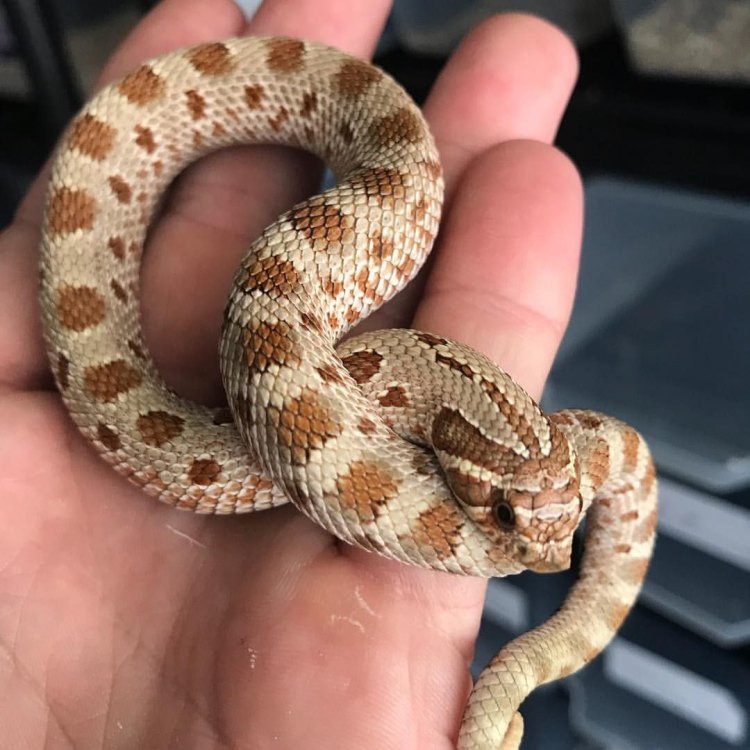
Hognose Snake
- Adult Size: 2-3 feet
- Average Lifespan: 10-15 years
- Reproduction: Sexual
- Reproductive Behavior: Males perform courtship ritual dances to attract females
- Sound or Call: Hissing sound when threatened
- Migration Pattern: Non-migratory
- Social Groups: Solitary
- Behavior: Famous for their bluffing behavior where they play dead when threatened
- Threats: Habitat loss and fragmentation, road mortality, human persecution
- Conservation Status: Least Concern
- Impact on Ecosystem: Help control rodent populations
- Human Use: Captivity as pets and for scientific research
- Distinctive Features: Long, upturned snout and the ability to flatten their bodies
- Interesting Facts: Can play dead and flip onto their backs, release musk to deter predators
- Predator: Birds of prey, larger snakes, and mammals
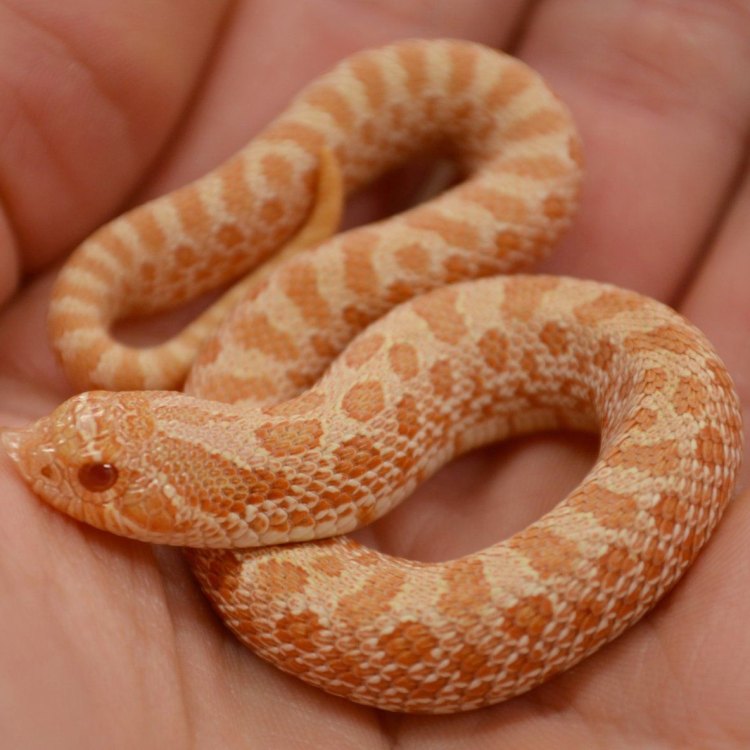
Heterodon nasicus
Hognose Snake: A Master of Deception
The Hognose snake, scientifically known as Heterodon nasicus, is a fascinating species of snake found in North and South America. At first glance, their appearance may seem ordinary, but upon closer inspection, their unique features and behavior make them stand out from other snake species. From their distinctive upturned snout to their ability to play dead, the Hognose snake is a master of deception, both in the animal kingdom and in human perceptions. In this article, we will dive into the world of Hognose snakes and discover their unique features, behavior, and impact on the ecosystem PeaceOfAnimals.Com.The Basics
The Hognose snake may not be the largest snake species, with an adult size of 2-3 feet, but they make up for it with their interesting features and behaviors. They have an average lifespan of 10-15 years, making them a long-term commitment for any potential snake owners. As their name suggests, they have an upturned snout resembling that of a pig, giving them a distinctive appearance. This feature is used for digging in the sand and soil, as they are primarily ground-dwelling snakes.When it comes to reproduction, Hognose snakes are sexual, meaning they require a mate to reproduce. During mating season, which typically occurs in late spring and early summer, male Hognose snakes perform elaborate courtship rituals to attract females. These courtship dances involve a series of movements, including body flipping and tail wagging, while emitting pheromones to signal their interest. This courtship behavior is not only entertaining to watch but also helps to ensure successful mating.
The Bluffing Behavior
One of the most famous traits of the Hognose snake is their bluffing behavior Herrerasaurus. When threatened, they have a unique defense mechanism of playing dead. This behavior has earned them various nicknames such as "puff adders" and "spreading adders." The Hognose snake will first flatten their bodies, spread their necks to resemble a cobra, and hiss loudly. If the predator persists, they will roll onto their backs, convulse, and even release musk in a last-ditch effort to deter the attacker. This elaborate act can last for several minutes, giving the snake time to escape while the predator is distracted.Threats and Conservation
While the Hognose snake has evolved to have excellent defense mechanisms, there are still threats that pose a danger to their survival. Habitat loss and fragmentation, due to human development and agriculture, are major threats to their population. Road mortality is also a significant concern, as these snakes are often found crossing roads during their seasonal movements. Additionally, humans persecute them due to their resemblance to venomous snakes, leading to unnecessary killings. However, despite these threats, the Hognose snake is currently listed as 'Least Concern' on the IUCN Red List of Threatened Species.Role in the Ecosystem
The Hognose snake may not be as well-known as some other snake species, but they play a vital role in their ecosystems. They are primarily a ground-dwelling species and can be found in a variety of habitats, including forests, grasslands, and deserts. They are also excellent burrowers, which helps to aerate the soil and keep it healthy. While they are non-venomous, they do have a mild venom that aids in subduing their prey, which mostly consists of rodents. This makes them essential in controlling rodent populations, preventing potential damage to crops and disease transmission.Human Use and Distinctive Features
The Hognose snake may not be as popular as other snake species in the pet trade, but they are slowly gaining recognition for their unique abilities and characteristics. Due to their docile nature and manageable size, they make suitable pets for experienced snake owners. However, it is essential to note that it is illegal to collect Hognose snakes from the wild, as they are protected by law in some states. In captivity, they can be fed a diet of rodents, such as mice and rats, and thrive in a similar habitat to their natural one.Apart from their upturned snout, the Hognose snake has other distinctive features that make them stand out. They have a series of keeled scales on their bellies, giving them a rough texture compared to other snake species. This adaptation allows them to grip the ground better while digging and moving around. They also have enlarged teeth at the back of their mouths, which they use to puncture their prey's skin and release their mild venom.
Interesting Facts
Aside from their bluffing behavior, Hognose snakes have many other intriguing qualities that make them a unique species. They have the ability to play dead and create a threatening display to scare off predators. This behavior is not limited to predators; they have been observed playing dead when approached by humans as well. Another interesting fact is that Hognose snakes can flip onto their backs, making them one of the few snake species with this capability. This ability helps them to 'play dead' more convincingly and also aids in escaping threats from above.While their bluffing behavior may give the impression that Hognose snakes are helpless prey, they have another trick up their sleeves to fend off predators. When threatened, they can release musk from their cloacal glands, which produces a foul odor that deters predators. This musk also has a mild paralyzing effect, giving the snake time to escape. Although their bluffing and musk releasing behaviors may seem comical, they are highly effective in keeping predators at bay.
Predators of the Hognose Snake
Despite their impressive defense mechanisms, Hognose snakes still have predators they need to watch out for in the wild. Birds of prey, such as hawks, are their primary predators, as they are immune to the snake's venom. Larger snakes and mammals, such as foxes and coyotes, also pose a threat to these snakes. However, their cryptic coloration and resemblance to venomous snakes make them less attractive to predators, giving them an advantage in surviving in the wild.Conclusion
In conclusion, the Hognose snake may not be a commonly known snake species, but they are undoubtedly a fascinating one. From their unique upturned snout to their ability to play dead, they have captivated the interest of many snake enthusiasts. Despite facing threats such as habitat loss and human persecution, they are currently in no danger of extinction. In fact, they are playing a crucial role in their ecosystems by controlling rodent populations. So, the next time you come across a Hognose snake, remember that they are not only masters of deception but also essential members of their habitats.
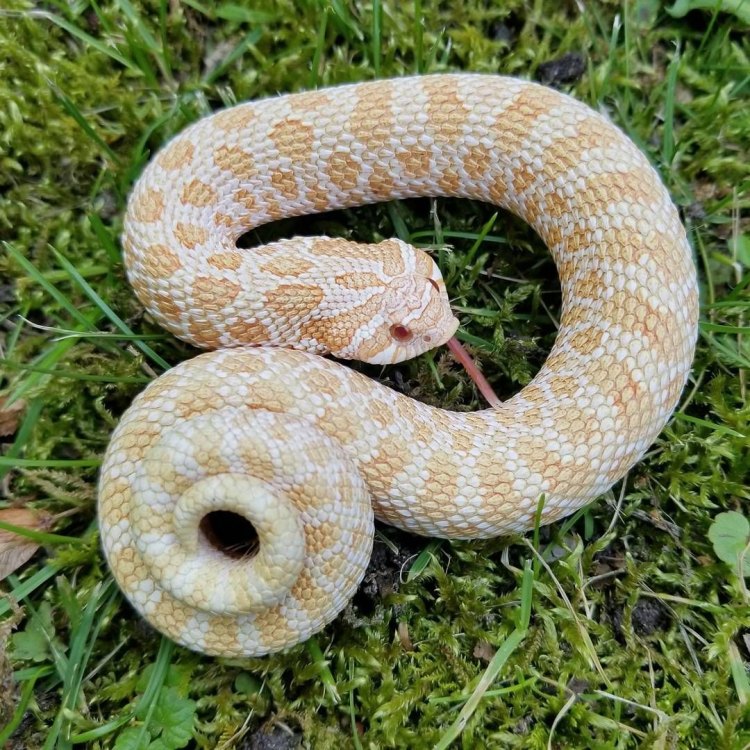
The Enigmatic Hognose Snake: An Elusive Creature of North America
Disclaimer: The content provided is for informational purposes only. We cannot guarantee the accuracy of the information on this page 100%. All information provided here may change without prior notice.


